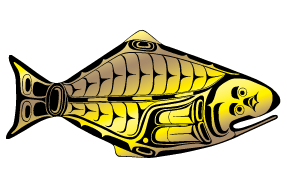While prosecuting directed Pacific halibut fisheries, commercial and recreational harvesters discard those fish that are outside of regulated size limits or are in excess of available individual quotas or allowances. Some mortality of these fish occurs as a result of injuries incurred during capture or release (discard mortality). Pacific halibut also die due to lost or abandoned fishing gear. Pacific halibut discards also occur in numerous fisheries targeting other groundfish species which capture Pacific halibut incidentally (bycatch). Except for other longline fisheries for which the harvester holds individual quota shares for Pacific halibut, any Pacific halibut encountered by these other groundfish fisheries must be returned to the sea as quickly as possible with a minimum of injury, under the IPHC fishery regulations.
Discard mortality rates (DMRs) are estimates of the proportion of incidentally captured Pacific halibut (by both directed and non-directed fisheries) that do not survive after being returned to the water. The magnitude of discard mortality varies according to both the capture and release methods. In general, capture of Pacific halibut by trawl fisheries inflicts greater injury than capture by longline or pot gears. Trawl-induced injuries arise from a variety of sources: compression and hemorrhaging of the fish in the codend of the trawl associated with the weight of the target species; clogging of the gills with sand, mud or sponges as the trawl net is dragged across the sea floor; lacerations from spines or carapaces of species also caught in the net; and, abrasions from debris or the scales of other species (e.g. sharks).
Longline and pot gear capture methods can result in fewer injuries and, in general, better fish condition at release. However, this is not always the case, especially concerning release from longline gear in cases where prescribed careful release methods are not practiced. Longline-capture injuries can occur in the form of torn jaws, cheeks, facial areas, eyes, or gills arising from hook removal; gaff wounds associated with hook removal; and, amphipod predation while on the hook. Pot-capture injuries are primarily associated with interactions of Pacific halibut with other species in the pot (e.g., lacerations and abrasions as a result of contact with other species).
The mortality associated with discarding Pacific halibut in both the directed and non-directed fisheries is estimated annually (utilizing data from multiple agencies, including the IPHC) and incorporated into the Pacific halibut stock assessment and projections made for management decision makings.

